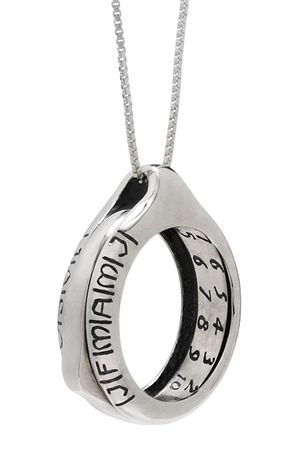
The Aevus Naviganti was discovered on Luna during an excavation by civilian contractors at the site of a new communications relay on dark side. The artifact was soon turned over to Starfleet for study. Then found its way to Solas Tempus and then to Vident Obscura when the science team had little or no success in explaining its properties.
Origin
The origin of the item is unknown. Its craftsmanship and the methods required to make the object contrast starkly with the language used to activate the item. The sundial is made to function in a similar way to the Eleanor of Aquitaine sundial. Its craftsmanship also post-dates this era itself considerably though the silver itself dates to the 3rd century B.C.E.
12th Century
The first appearance of the artifact in known history was in the year 1129 where a priest, Jacob, recorded finding it along with strange writing which he was unable to identify. The artifact was found around the neck of an elderly man who had farmed the land in the area without an heir since his family died in a fire many years ago. The priest made specific note that it seemed impossible the man had such an item in his possession. No one in the area could recall how the man might have came to own such a valuable item.
Jacob kept incredibly detailed and accurate records of his attempts to decipher the runes marking the artifact and did work out the item functioned to tell time in some way but was unaware of how to properly use the artifact properly in any way. His research delved into ancient and obscure latin texts. He believed that the artifact was imbued with a strange magic, since it never tarnished and could not be scratched or otherwise harmed. Had Jacob been able to discover the true nature of the Furthark runes on the artifact he may have been able to discover its true purpose. Their translation was lost on him, however as he never ventured far from home and did not look beyond the latin with which he was already familiar.
There is no record of the artifact after 1136, even upon the death of Jacob in 1156 where it was not recorded among his belongings.
19th Century
Diaries and written letters were discovered, including one sketch, which seems to identify that the item was found in the North Eastern regions of the Oregon Territory some time before the United Staes Civil War.
The diaries indicate that its owner was named Arnold Jacobson trying to make a living as a trapper and fur trader in the pacific northwest. Virtually nothing is known about this person except for his journals. Several inconsistencies from actual events trouble researchers. For instance, the diaries contain letters indicating some amount of correspondence from home in the 1830's where relatives of Mr. Jaconbson are upset that William H. Seward, a Whig candidate for Governor of New York in 1834, defeated the incumbent, which is historically untrue. Other similar references to New York politics are cited in further letters and some newspaper clippings also kept within the pages of the diary showing a sharp decline in the state given rash decisions made in 1830 and 1831. These events, too, did not occur in any other version of history. The reasons for the discrepancies are unknown.
The diaries, clippings, and letters were preserved in the Smithsonian archives, having come to the Smithsonian from a collector local history in Portland, Oregon named Scott McBrennon upon his death in 1879. The artifact is recorded missing during cataloging in 1901 at the dawn of the 20th century.
21st Century
A second, conflicting, appearance comes from military records of the United States Navy special projects division. Where the item, though supporting documentation, was found when a declassified base was removed from service in the year 2044. The base, known as Ad Undas, noted this item among several items which had no documentation, purpose, or other documentation but were in secure storage. While the item was recorded as stored at a secure facility in Nevada until being moved to Washington D.C. in 2067 it was reported missing later that same year after being recorded as arriving and storage at the Washington D.C. historic archive.
24th Century
A survey team preparing to install a backup subspace communications relay on Luna discovered the artifact was discovered in a sealed storage container 1.2 km below the surface on the dark side of the moon in 2361. After discovery the survey team attempted to have the object appraised for possible historical value in Tycho City on Luna.
Acquisition by Starfleet
This attracted the attention of Starfleet who requested the item be handed over for study once the appraiser requested assistance in dating the material. Due to the extraordinary properties exhibited by the silver Starfleet acquired the item in exchange for a higher placing among survey contractors on Luna. Study continued for several years resulting in several people going missing, though records there after are classified.
Acquisition by Solas Tempus
In 2375 the artifact was transferred for study to Solas Tempus, who quickly discovered its unique quantum properties and attempted to discover their nature. Records accompanied the device of experiments but no results were given. Gold Team could find only dubious explanations, most of which contradict some part of the observable evidence in some way.
Transfer to Vident Obscura
When Vident Obscura was formed the item was transferred there for further study, having been deemed an unexplained artifact but one worthy of being kept secret and out of circulation until such time as its exact properties are understood better.
Study and Discovery
The properties of the artifact were discovered by Vident Obscura after historical study regarding the artifact and careful research into items which similarly defy explanation lead to the discovery of its uses.